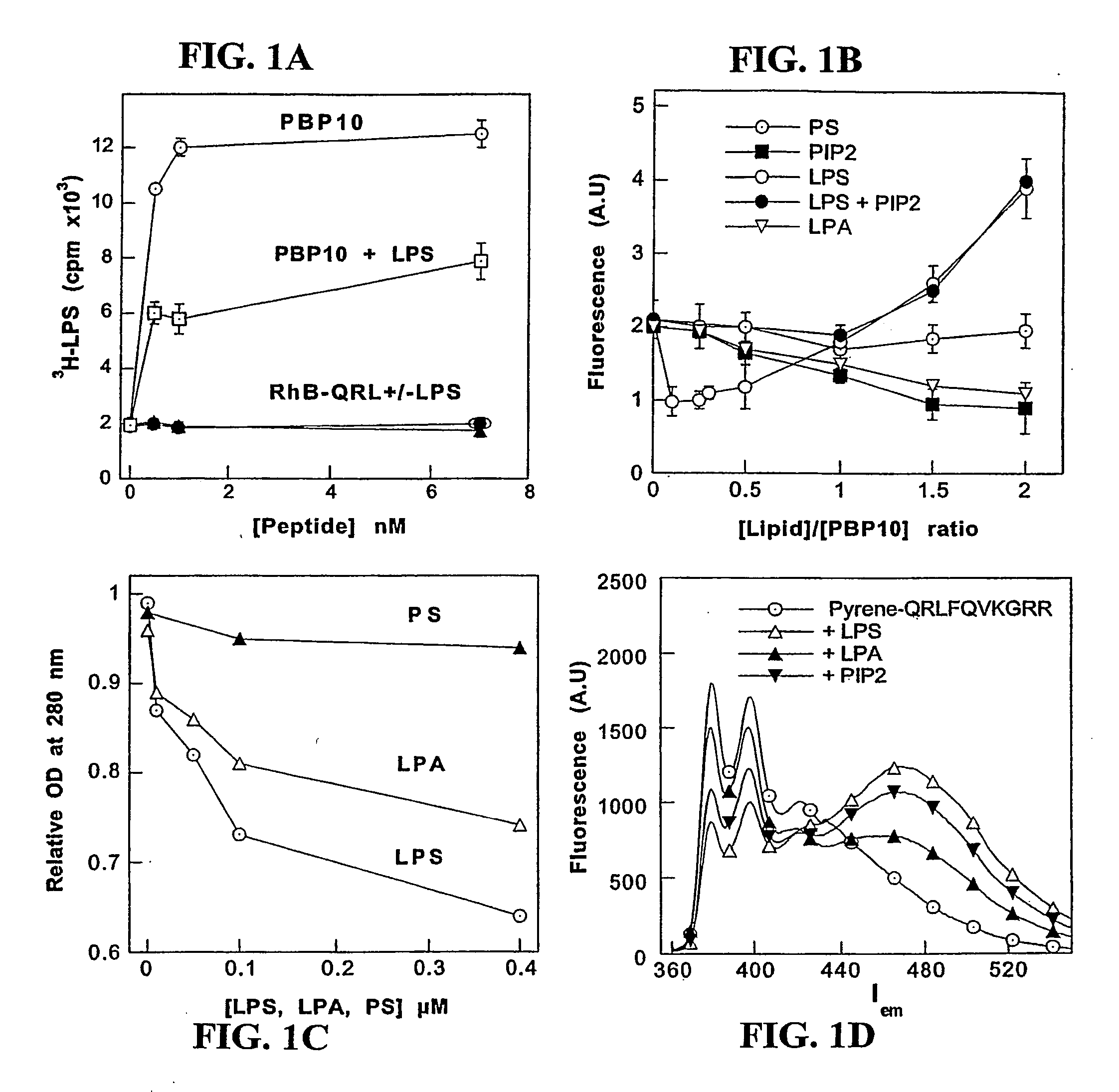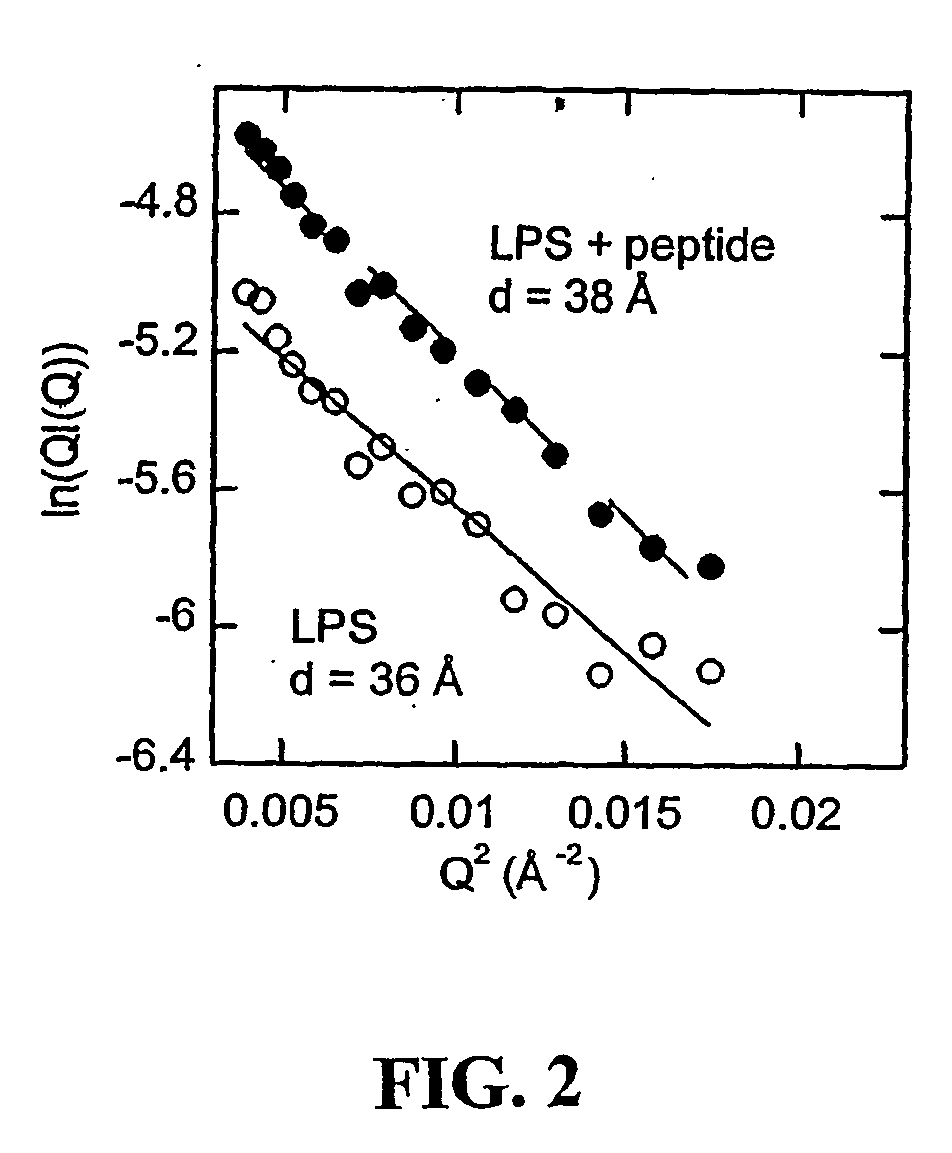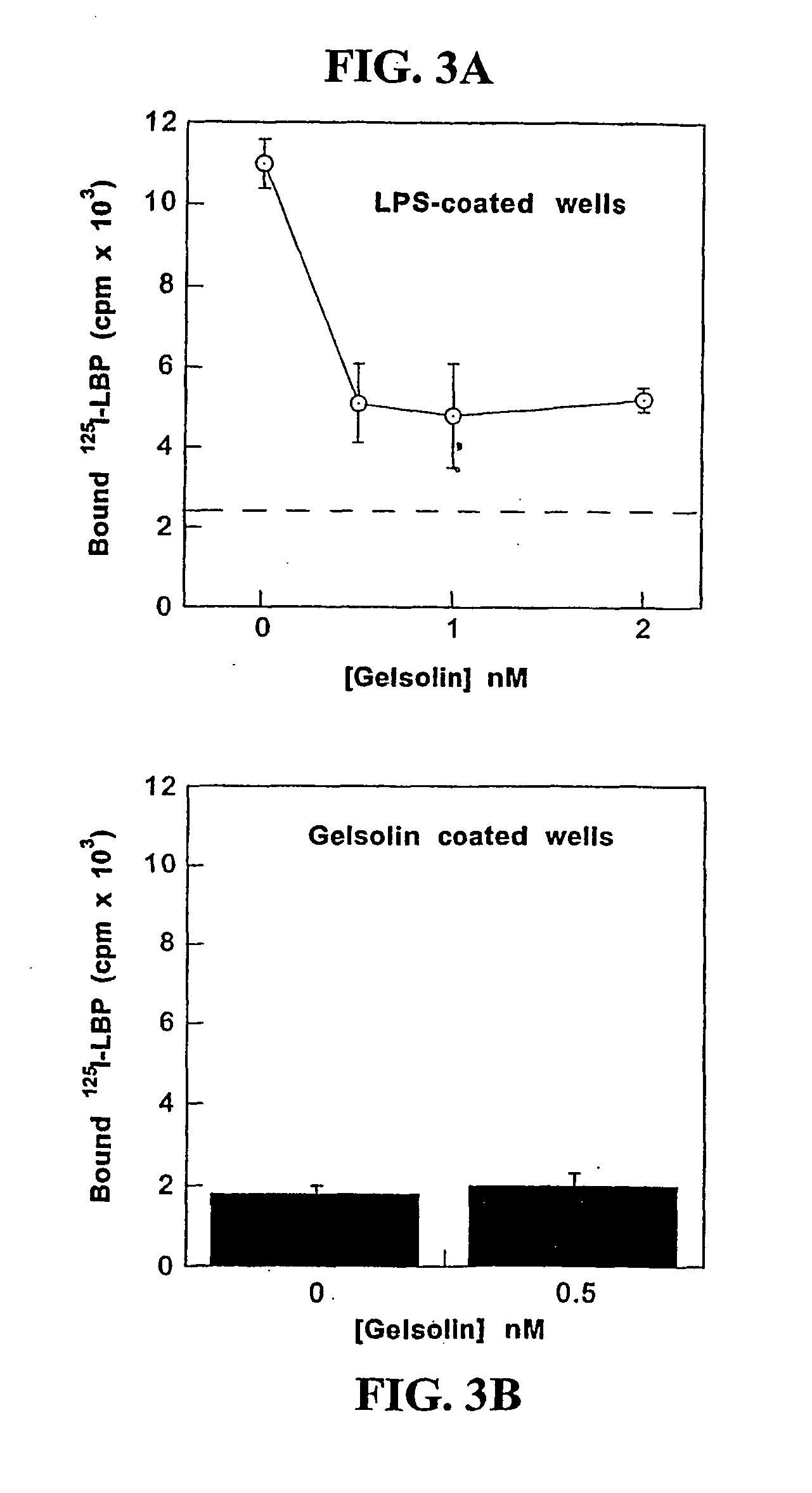Methods of using gelsolin to treat or prevent bacterial sepsis
- Summary
- Abstract
- Description
- Claims
- Application Information
AI Technical Summary
Benefits of technology
Problems solved by technology
Method used
Image
Examples
example 1
Gelsolin Binding and Severing Capabilities
[0095] Binding activity—To provide chemical and functional evidence that gelsolin binds LPS through its lipid-binding domain, a solid phase assay was conducted in which radiolabeled LPS was added to wells coated with different amounts of rhodamine-B-labeled-SEQ ID No:1 (rhodamine-B-QRLFQVKGRR, derived from the PIP2-binding site of gelsolin and termed “PBP10”), or to a truncated peptide (rhodamine-B-QRL), in the absence or presence of unlabeled LPS, respectively.
[0096] SEQ ID No:1 (QRLFQVKGRR) gelsolin residues 160-169, and QRL peptides, were prepared by solid phase peptide synthesis on p-benzyloxybenzyl alcohol / polystyrene resin using alpha-Fmoc protection chemistry and carbodiimide / N-hydroxybenzotriazole coupling as taught by Cunningham et al., J. Biol Chem 276:43390-9 (2001)). The side chains were protected as follows: Arg (Pmc), Gln (Trt), Lys (Boc). To couple fluorophores onto these peptides, ester derivatives of each fluorophore were ...
example 2
Gelsolin Competes with LPS-binding Protein (LBP) for LPS
[0108] To determinate whether gelsolin can effect an action similar to LBP-mediated incorporation of LPS into blood lipoprotein an experiment is utilized, in which repartition of Bodipy- or 3H-labeled-LPS to reconstituted HDL (R-HDL) or plasma lipoproteins is measured. R-HDL is prepared by mixing apo A-1, egg PC, cholesterol and cholate at molar ratio 1:80:4:80 followed cholate dialysis as previously described by Yu et al., 1997, supra. The fluorescence of Bodipy-LPS in micelles is quenched, but quenching is relieved and fluorescence increases upon movement of Bodipy-LPS monomers out of aggregates. An increase in fluorescence is observed when both gelsolin and R-HDL are mixed with Bodipy-LPS provides evidence for gelsolin-depended transfer of LPS to R-HDL, similar to that seen with LBP. Pure LPS and various amounts of gelsolin are added to observe if gelsolin alone changes the Bodipy-LPS fluorescence, since any such change wil...
example 3
Gelsolin's Actin Filament Severing Activity and Effect of LPS
[0112] To determine gelsolin's severing activity, rates of fluorescence decrease were evaluated during depolymerization. Monomeric G-actin was prepared from an acetone powder of rabbit skeletal muscle according to previously published methods (Spudich et al., J. Biol. Chem 216:4866-4871 (1975)). The non-polymerizing solution contained 2 mM TRIS, 0.2 mM CaCl2, 0.5 mM ATP (adenosine triphosphate), 0.2 mM DTT (dithiothreitol) pH 7.4. Actin was polymerized by adding 150 mM KCl and 2 mM MgCl2 to the G-actin solutions and incubating for 1 hour at room temperature.
[0113] For F-actin severing assays, in general, a small volume (typically 5 μl) of the gelsolin composition is added to a similar volume of pyrene-labeled F-actin at a concentration adjusted to provide an actin:gelsolin ratio of approximately 10:1 (typically 1 μM gelsolin and 10 μM actin). This mixture is the diluted to 0.5 μM in a larger volume of F-actin buffer, and...
PUM
| Property | Measurement | Unit |
|---|---|---|
| Fraction | aaaaa | aaaaa |
| Fraction | aaaaa | aaaaa |
| Concentration | aaaaa | aaaaa |
Abstract
Description
Claims
Application Information
 Login to View More
Login to View More - R&D
- Intellectual Property
- Life Sciences
- Materials
- Tech Scout
- Unparalleled Data Quality
- Higher Quality Content
- 60% Fewer Hallucinations
Browse by: Latest US Patents, China's latest patents, Technical Efficacy Thesaurus, Application Domain, Technology Topic, Popular Technical Reports.
© 2025 PatSnap. All rights reserved.Legal|Privacy policy|Modern Slavery Act Transparency Statement|Sitemap|About US| Contact US: help@patsnap.com



